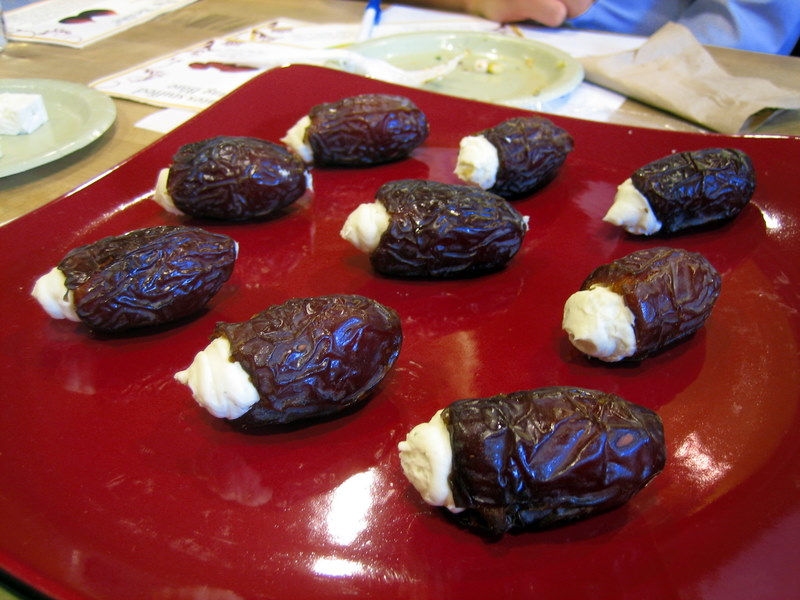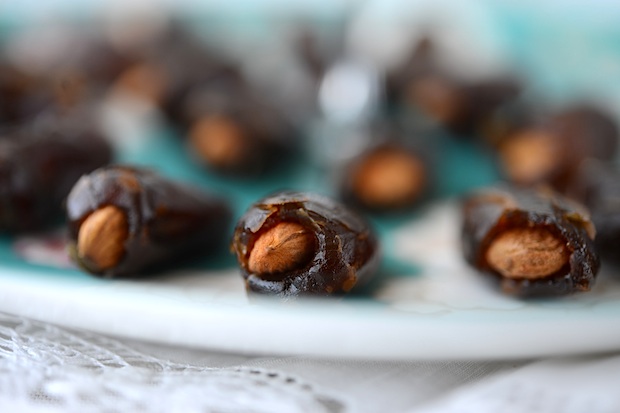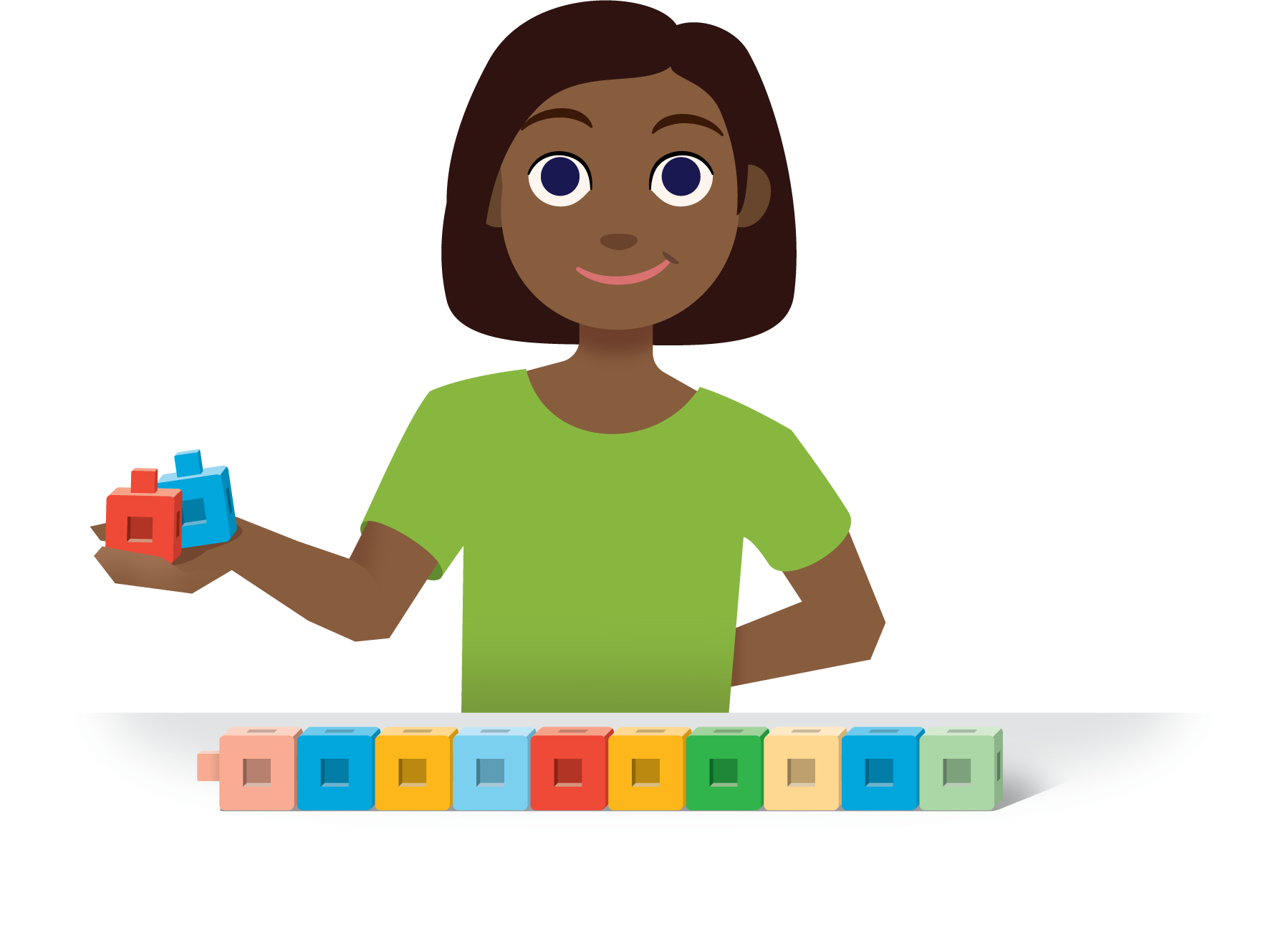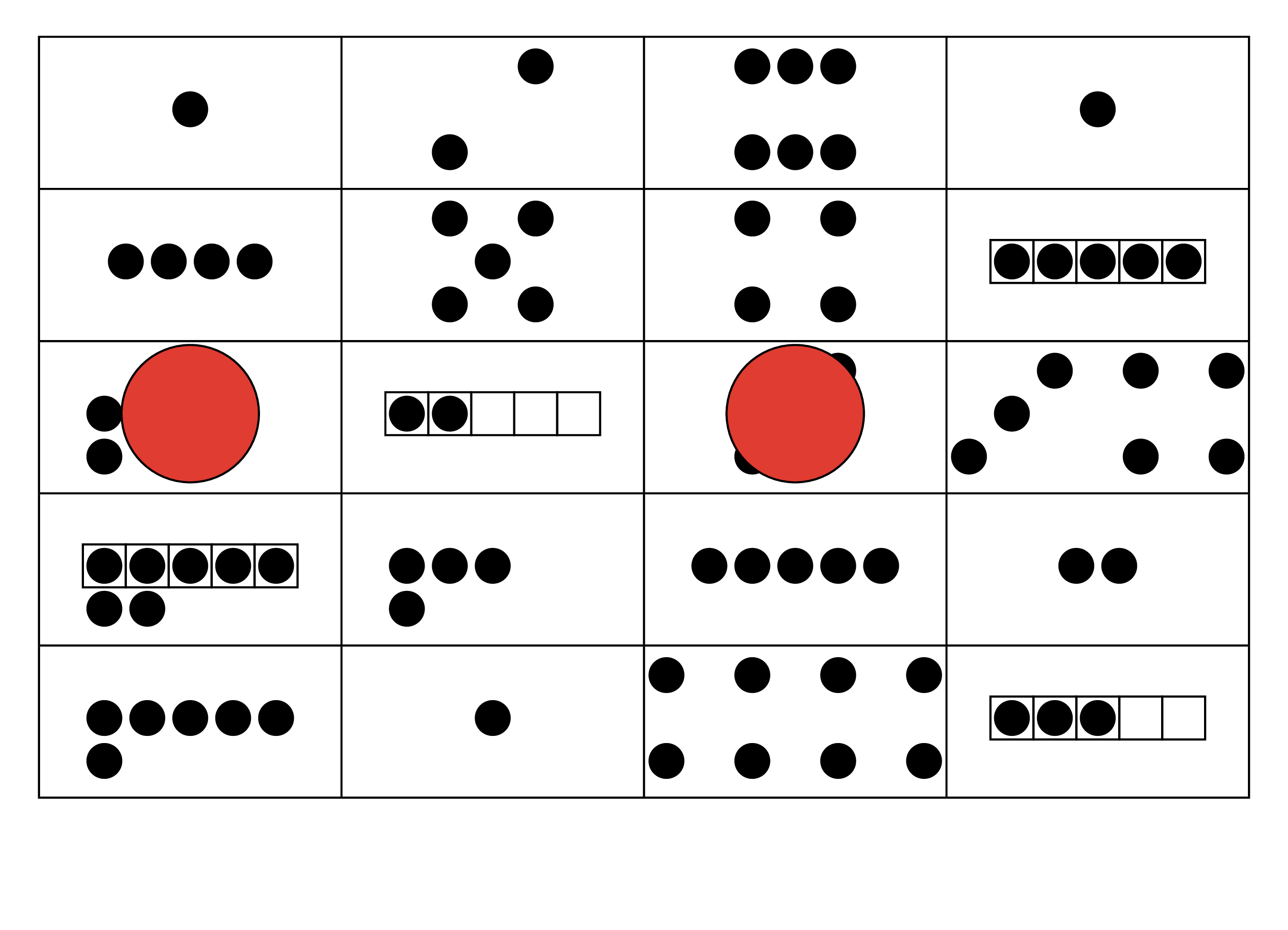Lesson 8
More Than One Way
Warm-up: Number Talk: Expressions (10 minutes)
Narrative
The purpose of this Number Talk is to elicit strategies and understandings students have for adding and subtracting 1. These understandings help students develop fluency with the count sequence and adding and subtracting within 5. When students use their knowledge of the count sequence when they add or subtract 1, they are looking for and making use of structure (MP7).
Launch
- Display one expression.
- “Give me a signal when you have an answer and can explain how you got it.”
- 1 minute: quiet think time
Activity
- Record answers and strategy.
- Keep problems and work displayed.
- Repeat with each expression.
Student Facing
Find the value of each expression.
- \(3 + 1\)
- \(1 + 3\)
- \(4 - 1\)
- \(4 +1\)
Student Response
For access, consult one of our IM Certified Partners.
Activity Synthesis
- Display or draw 1 red counter and 4 yellow counters:

- Display the expressions.
- “Which expression goes with these counters? Why do you think that?” (\(4 + 1\) because there are 4 yellow and 1 red.)
Activity 1: Citrus Juice (10 minutes)
Narrative
The purpose of this activity is for students to connect representations to story problems. Students look at two drawings and determine whether they both show solutions to a Put Together/Take Apart, Both Addends Unknown story problem. In the activity synthesis, students work with their partner to find another possible solution to the given story problem, which will be useful when they find more than one way to solve a Put Together/Take Apart, Both Addends Unknown story problem in the next activity.
When students describe how the diagrams represent the story problem, they reason abstractly and quantitatively (MP2).
Advances: Listening, Speaking
Required Materials
Materials to Gather
Launch
- Groups of 2
- Give students access to connecting cubes or two-color counters.
- Read the task statement.
- Display the images.
- “Clare and Diego both drew a picture to show what happened in the story. What do you notice? What do you wonder?” (They both drew 9 circles. One used color and one didn’t. One has numbers and letters and one just has numbers. I wonder why Clare didn’t use different colors. I wonder why one shows 3 and 6 and one shows 7 and 2.)
- 30 seconds: quiet think time
- 1 minute: partner discussion
- Share and record responses.
Activity
- “Which drawing shows the story?”
- 1 minute: quiet think time
- 2 minutes: partner discussion
- Share responses.
Student Facing
Han squeezed 9 pieces of fruit to make juice.
Some of the fruits were satsumas.
The rest of the fruits were grapefruits.
How many of the fruits were satsumas?
Then how many of the fruits were grapefruits?


Clare:

Diego:

Han squeezed 9 pieces of fruit to make juice.
Some of the fruits were satsumas.
The rest of the fruits were grapefruits.
How many of the fruits were satsumas?
Then how many of the fruits were grapefruits?
Show your thinking using objects, drawings, numbers, or words.
Expression: ____________________________________
Student Response
For access, consult one of our IM Certified Partners.
Advancing Student Thinking
- “What do we know about the fruit that Han squeezed? What are we trying to figure out?”
- “What is the same and what is different about Clare and Diego’s drawings?”
Activity Synthesis
- “There is more than 1 way to solve the story problem.”
- “Which drawing makes it easier to tell how many satsumas and how many grapefruits there are?” (It is easier to see in Diego’s drawing because he wrote numbers.)
- “Diego wrote numbers to show how many satsumas and how many grapefruits Han squeezed.”
- “Work with your partner to show another solution for the story problem. Be sure to include numbers to show how many satsumas and how many grapefruits.”
- Reread the task statement.
- “Show your thinking using drawings, numbers, words, or objects.”
- 3 minutes: partner work time
- “Write an expression to show how many satsumas and how many grapefruits there are.”
- 1 minute: independent work time
Activity 2: Dates to Stuff (15 minutes)
Narrative
The purpose of this activity is for students to solve a Put Together/Take Apart, Both Addends Unknown story problem about dates stuffed with cheese or almonds in more than one way. In the activity synthesis, students share their solutions. As students share, record their drawings and solutions systematically, as shown:
- 1 cheese, 7 almond
- 2 cheese, 6 almond
- 3 cheese, 5 almond
- 4 cheese, 4 almond
- 5 cheese, 3 almond
- 6 cheese, 2 almond
- 7 cheese, 1 almond
Only record solutions that students find for the problem. Leave an empty space if a combination isn’t shared.
In the lesson synthesis, students discuss whether a solution of 3 dates stuffed with cheese and 5 dates stuffed with almonds is the same solution as 5 dates stuffed with cheese and 3 dates stuffed with almonds. The purpose of the question is for students to think about and discuss what decompositions of numbers mean in context (MP2, MP6). There is no correct answer to the question. Some students may determine that both solutions are the same because they both showed 5 and 3 while other students may determine that the solutions are different because there are different numbers of dates stuffed with cheese and dates stuffed with almonds (MP3).
Supports accessibility for: Conceptual Processing
Required Materials
Materials to Gather
Launch
- Groups of 2
- Give students access to connecting cubes or two-color counters.
- Read and display the task statement.
- “Tell your partner what happened in the story.”
- 30 seconds: quiet think time
- 1 minute: partner discussion
- “What are we trying to figure out?” (How many of the dates were stuffed with cheese and how many of the dates were stuffed with almonds?)
- 30 seconds: quiet think time
- 1 minute: partner discussion
- “Show your thinking using drawings, numbers, words, or objects.”
Activity
- 2 minutes: quiet work time
- 2 minutes: partner discussion
- “Write an expression to show how many of the dates were stuffed with cheese and how many were stuffed with almonds.”
- 1 minute: independent work time
- “As you walk around, look to see if you can find other ways to solve the story problem.”
- 5 minutes: gallery walk
Student Facing
Andre and his older brother have 8 dates.
They stuff some of the dates with cheese.
They stuff the rest of the dates with almonds.
How many of the dates did they stuff with cheese?
Then how many of the dates did they stuff with almonds?
Expression: _______________________________


Student Response
For access, consult one of our IM Certified Partners.
Activity Synthesis
- Invite students to share their solution or solutions they found during the gallery walk. Record student solutions as explained in the activity narrative.
- “What do you notice? What do you wonder?” (2 and 6 is there but not 6 and 2. When it’s 4 and 4, there are the same number of cheese dates and almond dates. The first numbers are getting bigger and the second numbers are getting smaller.)
- “Are there any other ways that we can solve the problem? What makes you think that?”
- Record each student solution with an equation.
Activity 3: Centers: Choice Time (15 minutes)
Narrative
The purpose of this activity is for students to choose from activities that offer practice composing, decomposing, adding, and subtracting numbers.
Students choose from any stage of previously introduced centers.
- What’s Behind My Back?
- 5-frames
- Make or Break Apart Numbers
- Math Stories
Required Materials
Materials to Gather
Required Preparation
- Gather materials from from:
- What’s Behind My Back, Stage 1
- 5-frames, Stages 1 and 2
- Make or Break Apart Numbers, Stage 1
- Math Stories, Stages 1-3
Launch
- “Today we are going to choose from centers we have already learned.”
- Display the center choices in the student book.
- “Think about what you would like to do.”
Activity
- Invite students to work at the center of their choice.
- 10 minutes: center work time
Student Facing
Choose a center.
What’s Behind My Back?

5-frames

Make or Break Apart Numbers

Math Stories

Activity Synthesis
- “When we work in centers, it is fun to share our ideas but we also need to listen to our partner’s ideas. Which did you like better: telling your own story or listening to your partner’s story?”
- “What can you do to make sure that you are a good listener when playing in centers?”
Lesson Synthesis
Lesson Synthesis
Read the task statement.
Andre and his older brother have 8 dates.
They stuff some of the dates with cheese.
They stuff the rest of the dates with almonds.
How many of the dates did they stuff with cheese?
Then how many of the dates did they stuff with almonds?
Draw 2 representations with 3 and 5 and 5 and 3, with labels and numbers, as pictured:
Diego:

Priya:

“Diego and Priya drew these pictures to show what happened in the story. Priya says that they found the same answer to the story problem. What do you think?” (They did find the same answer because they both showed 5 and 3. They did not find the same answer because one showed more dates with cheese and one showed more dates with almonds.)
Write an equation for both Diego and Priya’s solutions. For example:
- Write \(8 = 3 + 5\).
- “Andre and his brother have 8 dates. They stuff 3 of them with cheese and 5 of them with almonds. We can write that as 8 is 3 plus 5.”
Cool-down: Both Addends Unknown (5 minutes)
Cool-Down
For access, consult one of our IM Certified Partners.